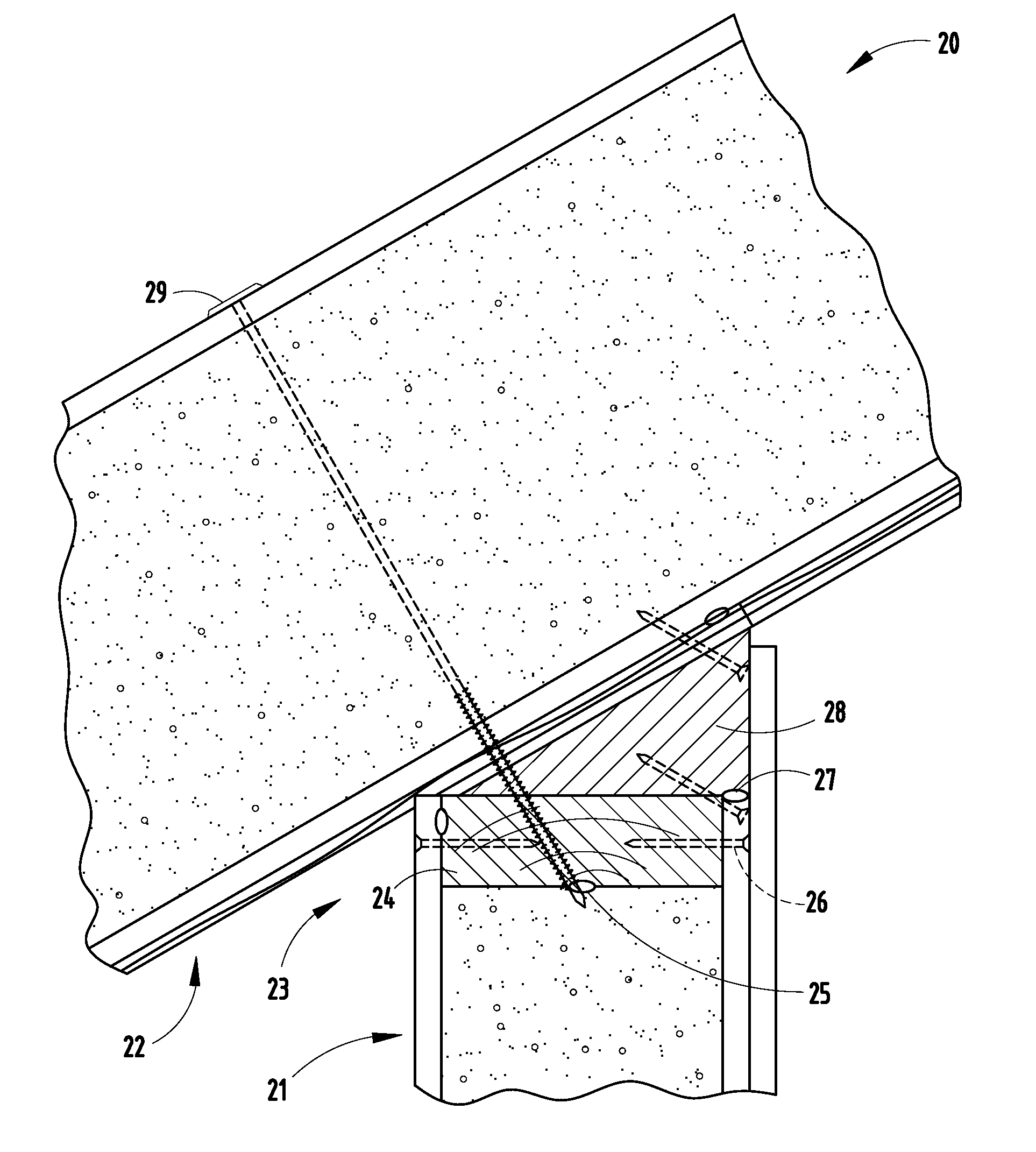Structural insulated panel for building construction
a technology of structural insulation and building construction, applied in the direction of building insulation, roofs, building components, etc., can solve the problems of not having a finished surface on the inside nor the outside, too expensive and inefficient installation of 4 foot wide panels, and the process of covering inside and outside surfaces after building/wall construction is very expensiv
- Summary
- Abstract
- Description
- Claims
- Application Information
AI Technical Summary
Benefits of technology
Problems solved by technology
Method used
Image
Examples
Embodiment Construction
[0013]The illustrated structural insulated panel (SIP panel) is large in size, such as 8 foot by 24 foot, and further incorporates outer layers forming high grade exterior and interior finishes as manufactured. The large size reduces on-site construction costs, and the exterior and interior finishes reduce on-site finishing costs. As a result, the present SIP panels reduce the overall cost of total building construction, so that the completed cost is less expensive than “stick” construction (e.g., wood stud framing for “framed” buildings having an on-site added outside such as vinyl siding and an on-site added inside such as drywall). The present SIP panels also save up to 50% of the heating and cooling costs, as well as meet fire code regulations.
[0014]This invention applies a finish in the factory to these large SIP panels. A combination of changed factors and upgrades of materials with the oriented strand board (OSB) and structural insulated paper makes for a panel finished insid...
PUM
| Property | Measurement | Unit |
|---|---|---|
| size | aaaaa | aaaaa |
| size | aaaaa | aaaaa |
| tensile strength | aaaaa | aaaaa |
Abstract
Description
Claims
Application Information
 Login to View More
Login to View More - R&D
- Intellectual Property
- Life Sciences
- Materials
- Tech Scout
- Unparalleled Data Quality
- Higher Quality Content
- 60% Fewer Hallucinations
Browse by: Latest US Patents, China's latest patents, Technical Efficacy Thesaurus, Application Domain, Technology Topic, Popular Technical Reports.
© 2025 PatSnap. All rights reserved.Legal|Privacy policy|Modern Slavery Act Transparency Statement|Sitemap|About US| Contact US: help@patsnap.com



